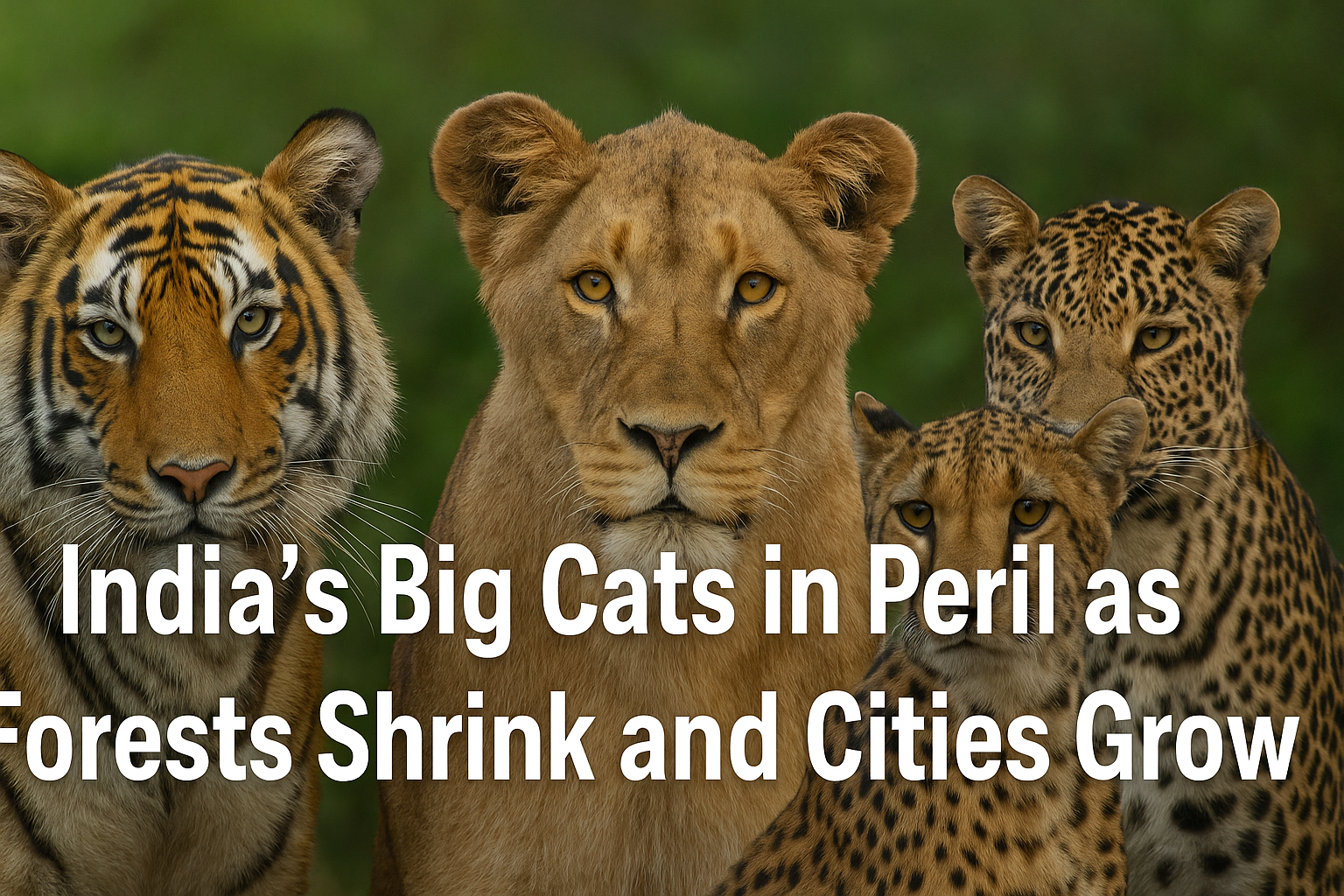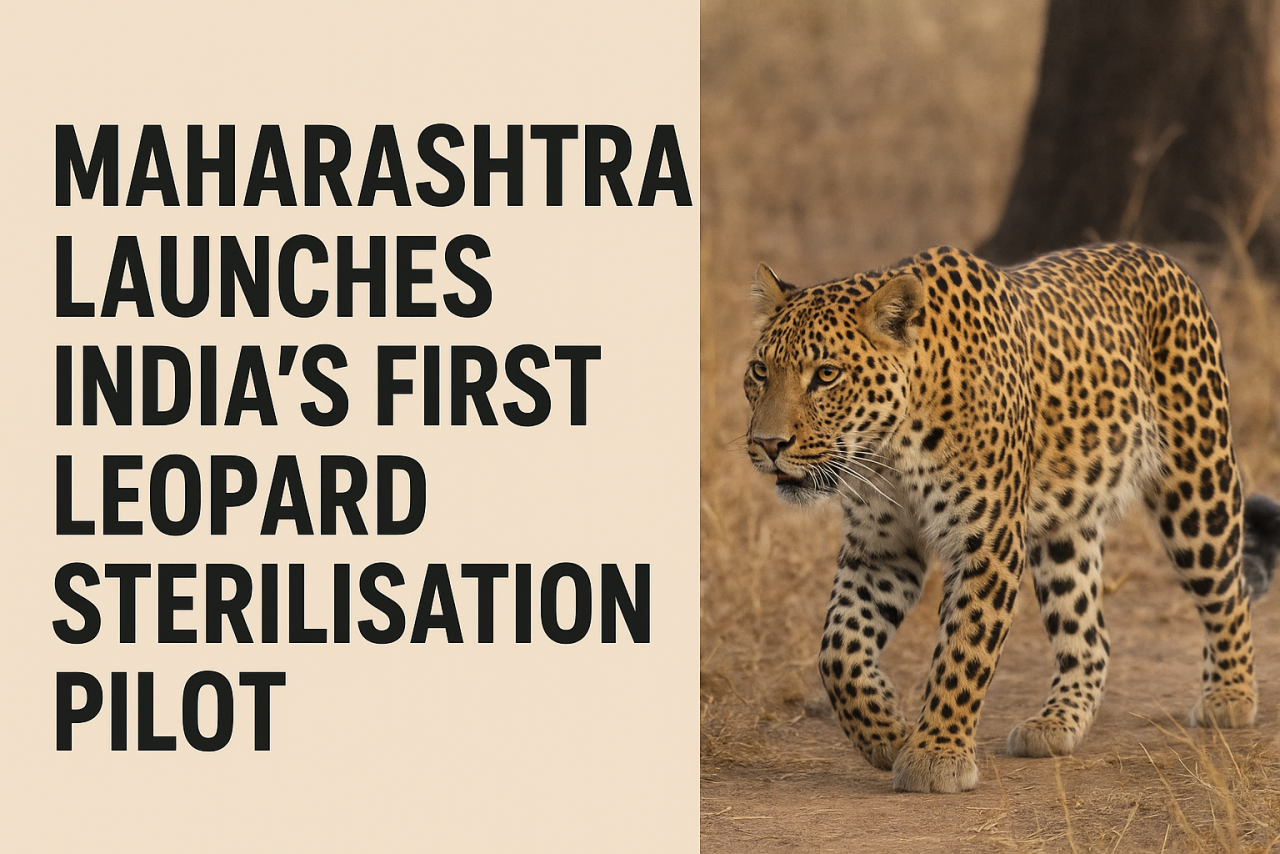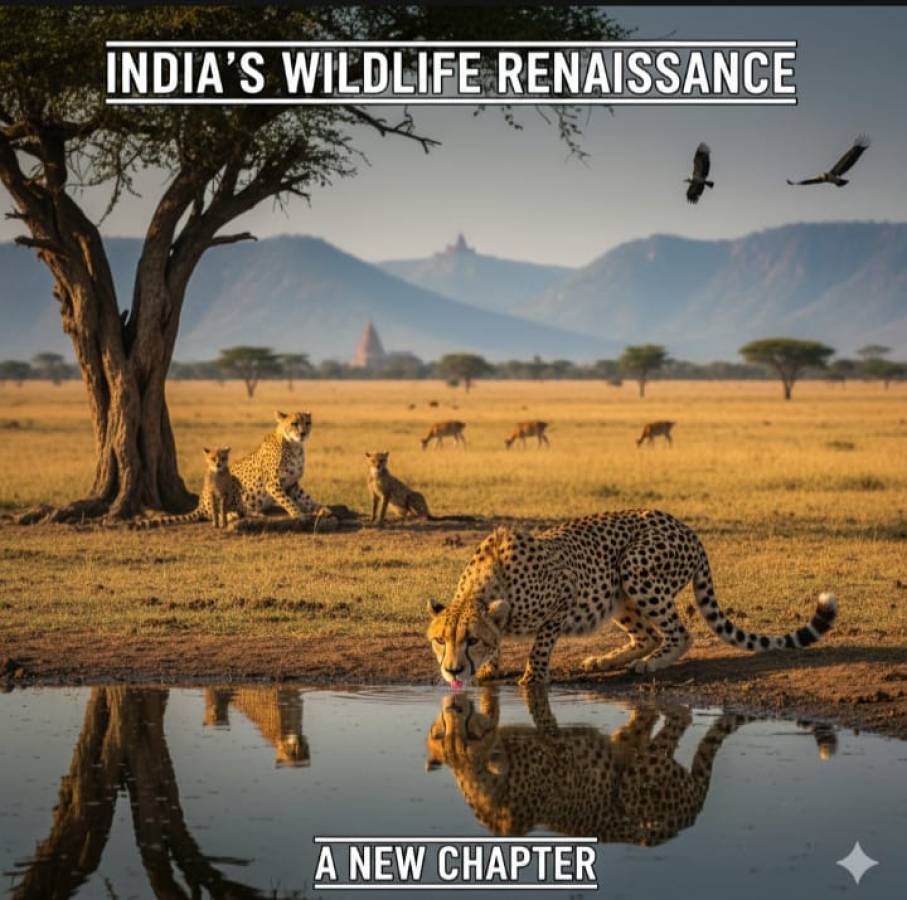
India is known for its rich wildlife, especially the big cats like tigers, lions, leopards, and cheetahs. These animals are not just important symbols of strength and beauty, but they also play a key role in keeping our forests healthy. However, a recent article by Bharati Chaturvedi, published in Hindustan Times, reveals a worrying trend. The forests where these animals once roamed freely are shrinking fast. The homes of India’s big cats are being taken over by cities, farms, and highways.
We take a deeper look at this crisis, using facts and data to understand how India’s big cats are losing their space and why this should matter to every citizen.
Forests Vanish as Cities Grow
India’s forests have always supported a wide range of wildlife. But with over 1.4 billion people and growing urbanization, forests are being cleared for roads, homes, industries, and agriculture. According to government reports, India loses over 1.5 lakh hectares of forest every year due to legal diversion for development projects. This may seem like progress for humans, but for wild animals, it is a silent disaster.
Tigers, for example, need large areas to hunt and live. A single male tiger may require up to 100 square kilometers of territory. When these spaces are cut into pieces by highways and rail lines, tigers are forced to move closer to human settlements. This leads to more encounters with people, which often end badly for both sides.
The Case of Jim Corbett and Lessons from the Past
The Hindustan Times article reminds us of Jim Corbett, the famous hunter-turned-conservationist whose 150th birth anniversary was celebrated this year. In the early 1900s, Corbett hunted man-eating tigers and leopards in India. Later, he became a protector of wildlife and helped set up what is now Corbett National Park, India’s first national park.
During Corbett’s time, forests were vast and less disturbed. Today, even national parks are not safe from outside pressure. Take Keoladeo National Park in Rajasthan as an example. In the 1970s, it was still being used for hunting. Only after legal action and pressure from conservationists did shooting wildlife stop. This shows how hard it is to protect forests unless strong laws and public support are in place.
Big Cats and Their Challenges
India is home to several big cat species, but each is facing its own struggle.
- Tigers have made a comeback in numbers. From 1,411 in 2006, the population has increased to 3,682 in 2022. But this success hides a challenge. Tigers now live in smaller areas surrounded by people, which causes frequent conflict.
- Lions, found only in Gujarat’s Gir Forest, number around 674. They are all in one location, making them vulnerable to diseases and disasters. Efforts to move some lions to other states have been delayed for years.
- Leopards are more flexible and can survive in farmlands and near villages. Their number was 13,874 in 2018. However, they are often killed in road accidents or by angry villagers. In 2021 alone, over 400 leopards died unnaturally.
- Cheetahs were reintroduced in 2022 after going extinct in India in 1952. Twenty African cheetahs were brought to Kuno National Park. But nine have died within a year. Experts blame poor habitat planning and lack of prey.
Why Wildlife Corridors Matter
One key solution discussed in the article is the idea of wildlife corridors. These are strips of forest that connect two larger forest areas. Corridors allow animals to move safely between habitats, find mates, and expand their territory. Without them, animals are trapped in small areas and may die out over time.
Forests do not exist in isolation. They are part of a larger system that includes rivers, grasslands, and even human settlements. If forests shrink, the entire ecosystem suffers.
What Can We Do?
The article rightly says we no longer need hunters with guns to save big cats. What we need are better laws, stronger public awareness, and scientific planning. Here are a few steps India must take:
- Increase the size of protected areas and connect them with corridors.
- Involve local people in conservation by providing jobs through ecotourism.
- Use technology like camera traps and GPS collars to monitor animals.
- Plan development projects more carefully, keeping wildlife movement in mind.
Final Take
India’s big cats are not just animals in the forest. They are part of our culture, our environment, and our identity. If they disappear, our forests lose balance and beauty. It is not too late to act, but the time to act is now.
We may not need bullets, but we do need bold steps. Because when the roar of the tiger fades, something in the forest and in us goes quiet too.





















